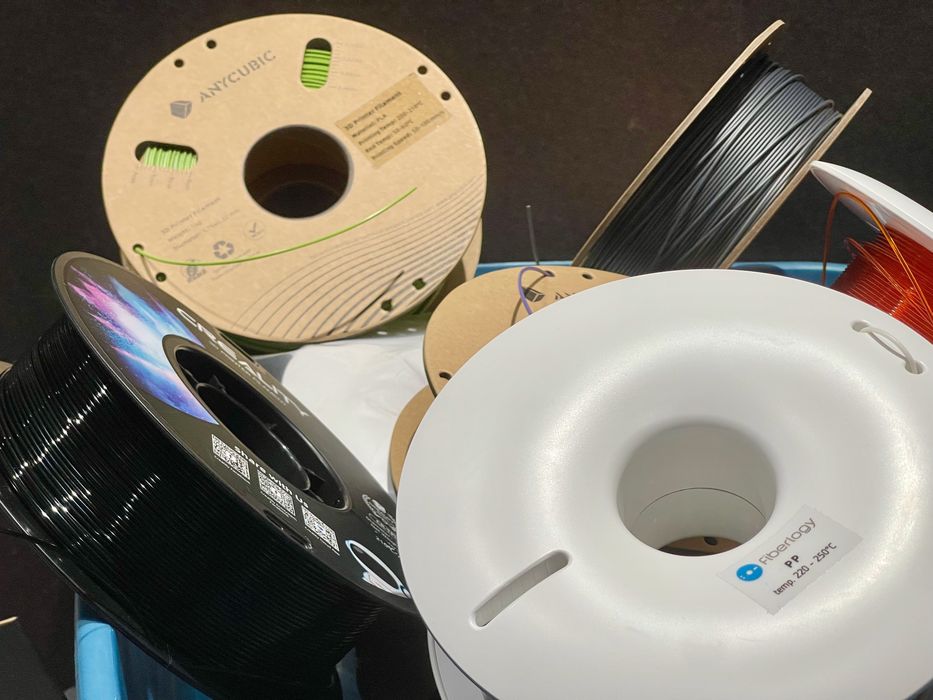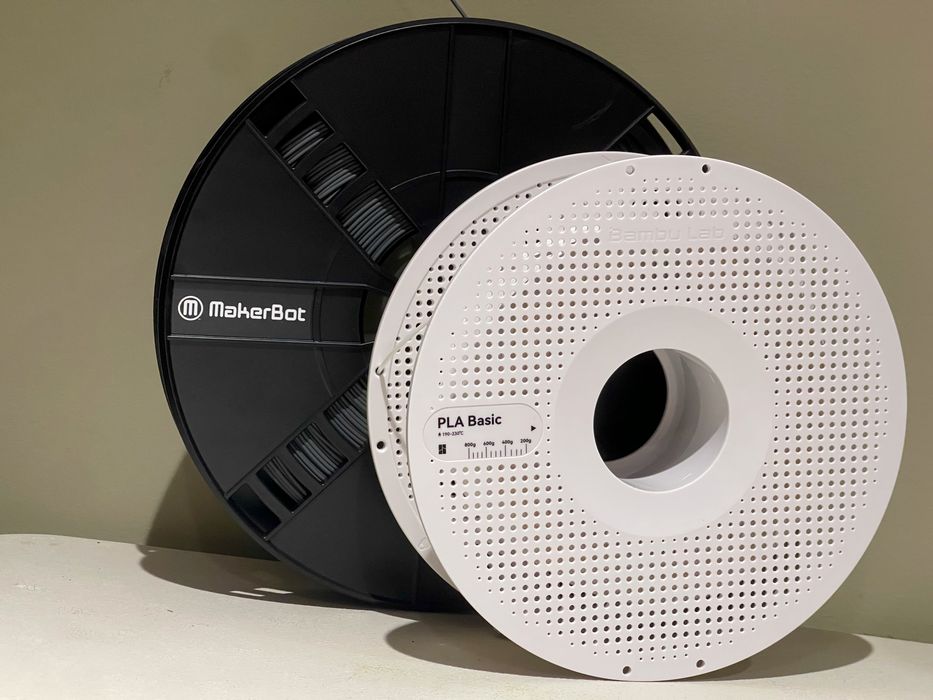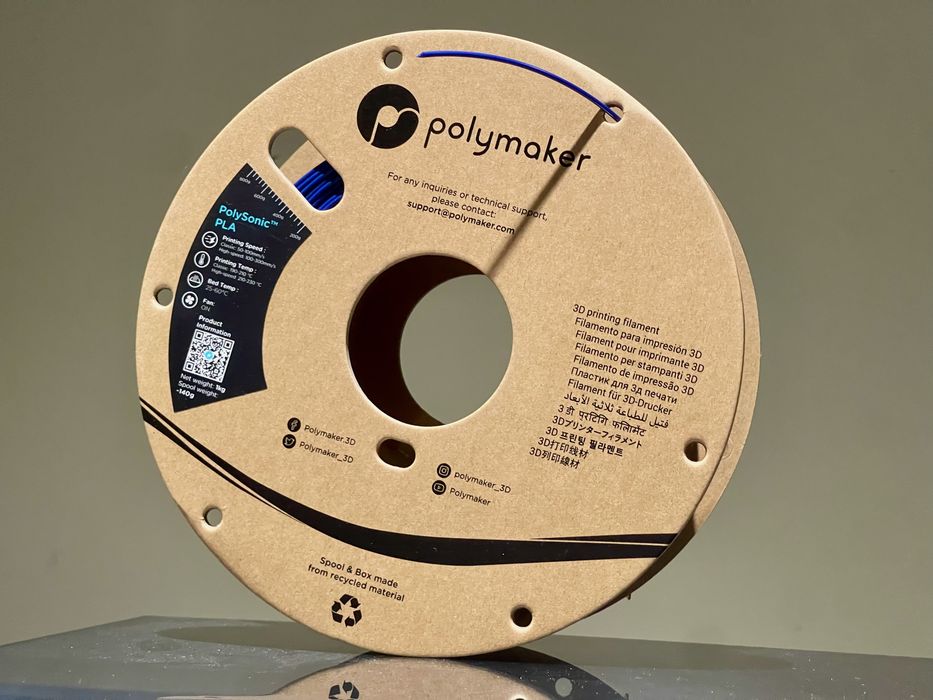
Spools should really be standardized across 3D printing, but that’s never going to happen.
After writing yesterday’s story about digital spool scales, I thought about the problem of using them: you must know the weight of the spool itself. This value is subtracted from the weight of the loaded spool to compute the weight of the material.
That’s easy, except that the spools are all different from each material provider. Each spool design weighs something slightly different, implying the 3D printer operator must maintain a list of spool weights, or weigh each and every spool separately before use.
Standardizing 3D Printer Spools
The world of FFF 3D printing would be a great deal simpler if these spools were fully standardized.
What do I mean by “standardized”? There are two aspects: dimensions and identification.
For dimensions we would have five standard measurements, including:
- Hub diameter – the diameter of the core around which the filament is wrapped
- Hole diameter – the diameter of the hole in the hub where a spool mount would be inserted
- Flange diameter – the maximum diameter of the large outer plates that hold the filament to the hub
- Hub length – the length of the space between the flanges
- Flange width – the width of each flange, typically quite thin
The values for these have varied considerably over the years. Years ago, for example, MakerBot’s spools had very large flanges, but short hub lengths. However, the sizing seems to be slowly converging on a common size among providers.

But they’re not identical. This means that there are often issues mounting spools on equipment, particularly when designed to accommodate a specific spool configuration by the 3D printer manufacturer. This issue has been exacerbated by current devices that include filament switching units (like the Bambu Lab AMS or Anycubic ACE PRO), which are far less forgiving than just having a spool on a rod like many Creality devices.
If there were standard spool sizes then it would be far easier to use different materials on different devices. I believe there could be one size for ~1kg materials, and perhaps a couple of larger versions for higher weights used in large format 3D printers.

The spools should also be made from strong but fully recyclable materials. Polymaker’s current spools are a very good example combining strength and sustainability. By making spools with the same materials, they could, in theory, all weigh the same amount.
Standard RFID Codes for 3D Printer Spools
Regarding identification, this is being done by several manufacturers. The idea is to embed a tiny RFID chip in the spool, which is read by the 3D printer. The code received from the chip then tells the printer the material type and color on the spool.
Again, the problem is that the coding systems differ between 3D printer manufacturers. A Bambu Lab machine, for example, cannot read an Anycubic spool and vice versa. Third party providers cannot use the coding systems at all.
The result is identification chaos, and a definite barrier to fully leveraging 3D print technology.
Barriers to 3D Printer Spool Standardization
Why don’t the 3D printer manufacturers come up with a standard way to size and identify their material spools that everyone can use? There are a couple of reasons.
One is innovation: if a standard is developed too quickly we could get locked into a less than optimal solution. Imagine if we had standardized spools ten years ago: we might be using those awkward MakerBot-style spools today. The question is, has spool technology converged sufficiently to warrant standardization? I’m not sure, but it seems close.
The second, and perhaps more important barrier to standardization is lock-in. 3D printer manufacturers make a considerable profit when selling materials. With the relatively low prices of equipment these days, it’s likely many machines would consume more value in filament than the machines cost themselves.
It’s in the manufacturer’s interest to encourage purchase of their own in-house materials rather than have that cash head towards third parties. Proprietary identification methods have been identified, but not shared for others to use.
This is the primary reason standardization has not yet emerged, and very likely the reason spool standardization may never happen.
The only way I can see this happening is if one of the big players, say Prusa Research, Creality or another, might want to gain points with customers by opening up their equipment to use the widest possible range of materials. They would work with third party providers to implement automatic material identification, and once that starts it would quickly spread.
One way this could happen is if the 3D printer manufacturer reserved the codes for the specific basic materials and colors they sell, leaving the remainder for third parties to develop.
Will that happen? Not a chance.
